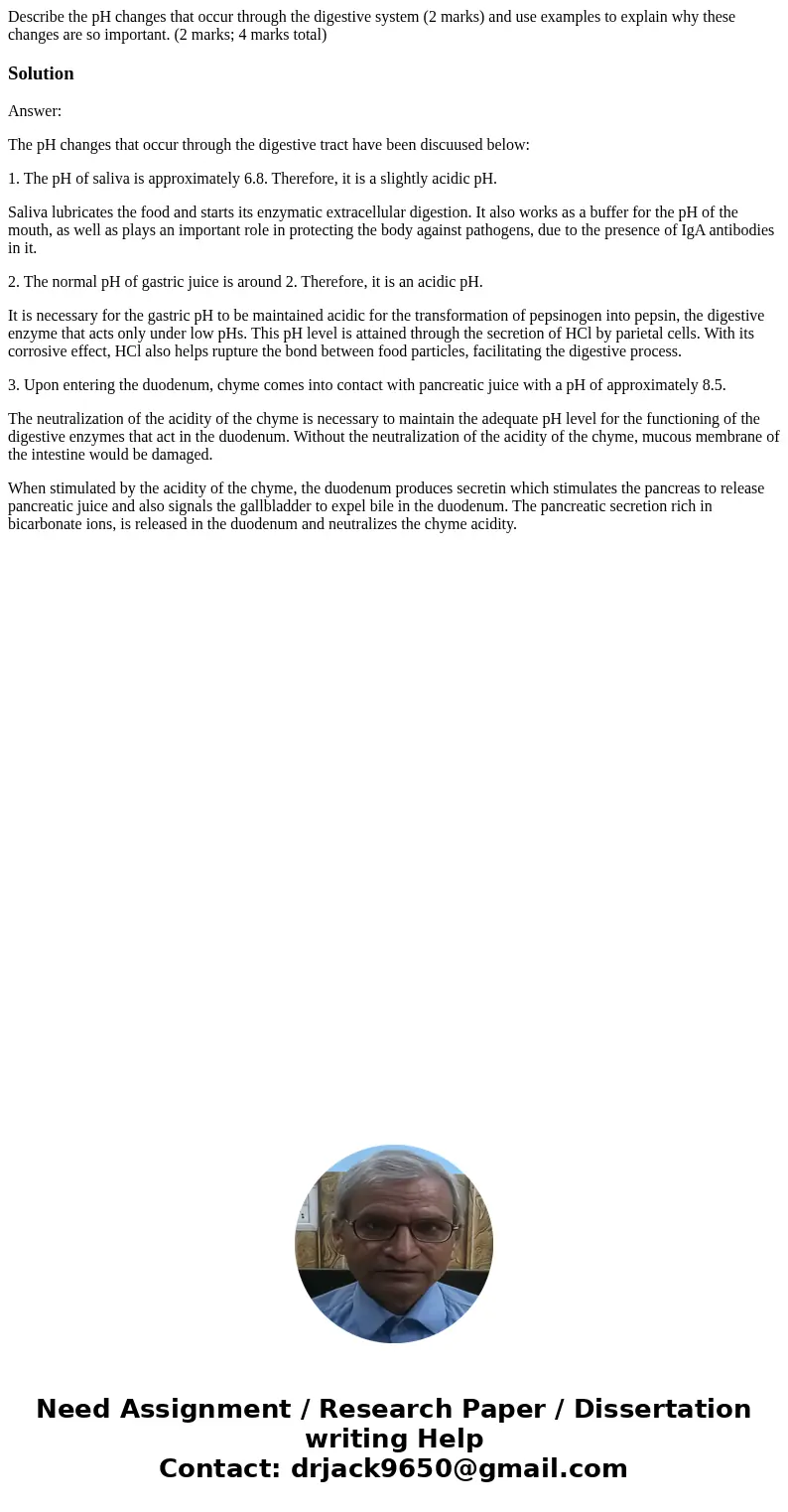Describe the pH changes that occur through the digestive sys
Describe the pH changes that occur through the digestive system (2 marks) and use examples to explain why these changes are so important. (2 marks; 4 marks total)
Solution
Answer:
The pH changes that occur through the digestive tract have been discuused below:
1. The pH of saliva is approximately 6.8. Therefore, it is a slightly acidic pH.
Saliva lubricates the food and starts its enzymatic extracellular digestion. It also works as a buffer for the pH of the mouth, as well as plays an important role in protecting the body against pathogens, due to the presence of IgA antibodies in it.
2. The normal pH of gastric juice is around 2. Therefore, it is an acidic pH.
It is necessary for the gastric pH to be maintained acidic for the transformation of pepsinogen into pepsin, the digestive enzyme that acts only under low pHs. This pH level is attained through the secretion of HCl by parietal cells. With its corrosive effect, HCl also helps rupture the bond between food particles, facilitating the digestive process.
3. Upon entering the duodenum, chyme comes into contact with pancreatic juice with a pH of approximately 8.5.
The neutralization of the acidity of the chyme is necessary to maintain the adequate pH level for the functioning of the digestive enzymes that act in the duodenum. Without the neutralization of the acidity of the chyme, mucous membrane of the intestine would be damaged.
When stimulated by the acidity of the chyme, the duodenum produces secretin which stimulates the pancreas to release pancreatic juice and also signals the gallbladder to expel bile in the duodenum. The pancreatic secretion rich in bicarbonate ions, is released in the duodenum and neutralizes the chyme acidity.

 Homework Sourse
Homework Sourse